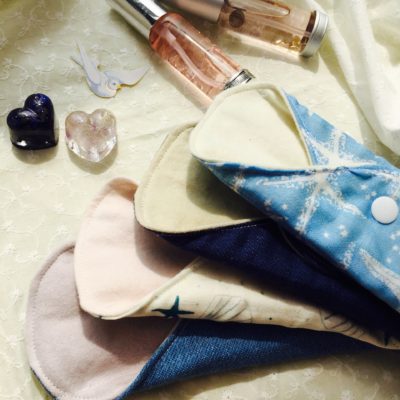
I have written about choosing greener options for a period. There are a lot of options out there, while I use only the menstrual cup, there are women out there who use and swear by the homemade sanitary pads. If the question on your mind is “how to make homemade sanitary pads”, then you should be reading till the end of the post.
How to make homemade sanitary pads
I am not a seamstress, but I did find this really easy DIY tutorial on YouTube that gives you a step-by-step instruction on how to make homemade sanitary pads or napkins. Trust me it’s a lot more simpler than listing the step on how to make homemade sanitary pads. This video shows you to make three different types of homemade sanitary pads.
https://www.youtube.com/watch?v=jZhnKeGyHLI
Read more: A DIY step-by-step tutorial on how to make your own reusable sanitary napkins.
Watch another video tutorial here.
Why do you need to opt for cloth pads?
- Cloth pads are free from chemicals
- Pure cotton cloth pads are also free from dyes.
- Cloth pads remove the risk of TSS (Toxic Shock Syndrome) because the pads are chemical-free.
- Cloth pads (choose bamboo cotton and plain cotton) are more breatheable. This ensures that there are less chances of an infection.
- Since cotton is gentler on the skin, there are lesser chances of a rash.
How do you clean a cloth pad?
You can choose to clean your cloth pads either by handwash or using the washing machine. Either way that you choose, ensure that you have washed it thoroughly to avoid any risk of infection. Cleaning your homemade sanitary napkins is something that should be done properly and thoroughly.
A handwash
- Wash the used cloth pads under running water till clear water flows through.
- Soak them in a tub of water for at least 6 hours with a mild detergent.
- Scrub them gently scrub to clean it completely.
- Dry it in the sun. Fold and keep it in a dry place.
Optionally when you soak the cloth pads, you can add one of the following to water:
- the juice of one lemon
- a capful of [amazon_textlink asin=’B016W0Y638′ text=’ACV’ template=’ProductLink’ store=’pratsm-21′ marketplace=’IN’ link_id=’e17fcf63-1ac1-11e8-9da3-df2c0b139d51′]
- 2 drops of therapeutic grade essential oils of either [amazon_textlink asin=’B015XZCDRO’ text=’teatree’ template=’ProductLink’ store=’pratsm-21′ marketplace=’IN’ link_id=’22458903-1ac2-11e8-8046-7986281f78b7′], [amazon_textlink asin=’B075P1N7J8′ text=’eucalyptus’ template=’ProductLink’ store=’pratsm-21′ marketplace=’IN’ link_id=’57043b0b-1ac3-11e8-9ecb-7f262b12cd79′] or [amazon_textlink asin=’B01M06ICNA’ text=’lavender’ template=’ProductLink’ store=’pratsm-21′ marketplace=’IN’ link_id=’428c5c99-1ac3-11e8-bec0-cf72e8659034′].
Using a washing machine
- Wash the used cloth pads under running water till clear water flows through.
- Soak them in a tub of water for at least 6 hours with a mild detergent.
- Toss them in the washing machine and choose the warm water cycle to clean the cloth pads.
There really is no right or wrong way to clean cloth pads. You need to chose a way that best fits you comfort levels. If you look at the packaging, most cloth pads come with an instruction manual or have instructions on how to clean them.
ALSO READ: How to clean a menstrual cup
Always wash your pads before use. If your pads are made of cotton or bamboo, they will be more absorbent post a wash. Keep your used pads in a closed bag or box if you are not washing them immediately.
If you are looking on more information on disposable sanitary napkins/pads, look up these links mentioned below that talk about them. Some of them also have a DIY tutorial that can help you get started to make your own disposable sanitary napkins.
More sites to refer:
- Hilly Billy Housewife
- Wiki How
- Make your own cloth pads
- Cloth pads for beginners
- Making your own pads
[amazon_link asins=’B074JCT5DH,B074J99J44,B074J98M2S,B071G12RHH’ template=’ProductCarousel’ store=’pratsm-21′ marketplace=’IN’ link_id=’54b97e2c-1713-11e8-a6c3-376b0afe3e15′]
The store bought bought options are no doubt convenient. Available in most sizes and comfortable, these sanitary napkins may be a boon to you, but bit by bit they contribute to the landfill and pose a lot of environmental hazards. Make a choice and move to sustainable living. Make your own reusable sanitary napkins and do your two bits to lead a sustainable life.
This is an interesting post. But I have some issues with cloth pads, because I have actually used them in my teenage. The use of cloth pads is actually a common traditional method in small town communities, and I’ve used them a few times as a back-up when I happened to run out of pads. And sorry to say, but I swore never to use them again and began buying bagfuls of pads in advance just so I don’t run out ever.
So here are the issues that I faced with cloth pads:
1. They are hardly as absorbent as the regular pads and they need to be changed every 3 hours almost, especially for people who have a heavy flow. Very, very inconvenient.
2. Considering that micro thin options exist in the market now, using these is most uncomfortable because they are thick between your thighs and make sitting down uncomfortable as well!
3. There is no adhesive at the bottom so they don’t stick to your panty and, needless to say, that causes far more staining.
4. You’re always aware of the pad inside your panty, for the above mentioned reason: its not stuck in one place. Forget physical activities like sports or dancing, when I had to use them I was always conscious of even walking properly.
So please suggest how these drawbacks of cloth pads can be overcome.
It’s Amazing Prathibha
It’s Amazing & Intresting Prathibha